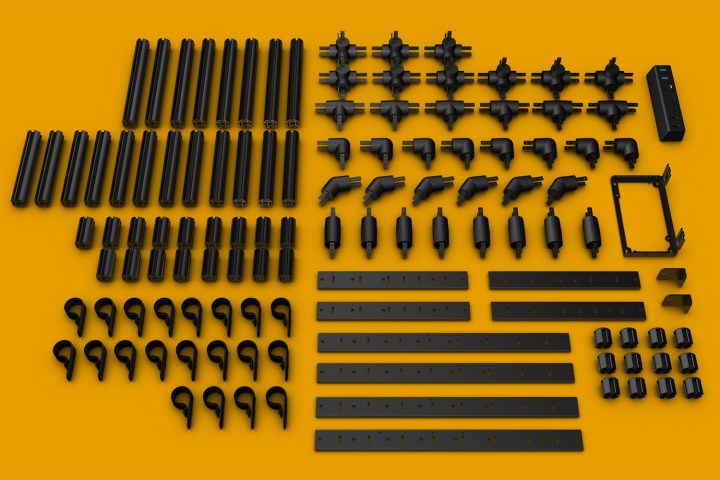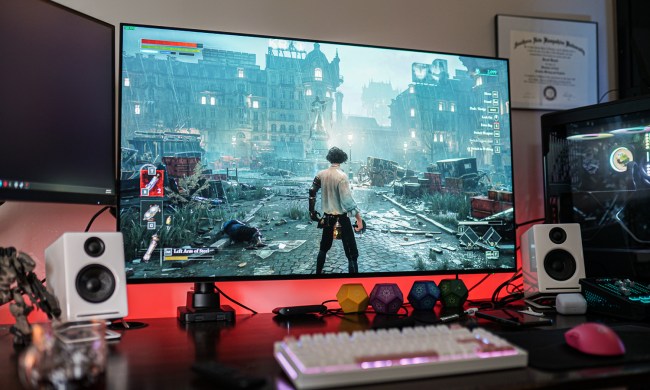Instead of a box that you slam components into like a lazy robot, the Dream Box is simply a package of 188 parts that’s only limited by your imagination. Like big kid K’nex, these aluminum and plastic parts are easily adaptable to any structure you might need, whether that’s a new PC case, or a model of a dinosaur – or both! Aerocool actually lists a few examples of possible structures, and while they might not be the most practical, it does appear you could install a full PC build in them.

Aluminum pipes in three sizes, 50, 100, and 150 mm, are the bones of the case. Each pipe is grooved on four sides, for hassle-free connections to other pipes and panels. Those attachments include two, three, and four way joints, metal beams with screwholes in two lengths, and C-rings to attach parts at any conceivable angle.
While the Dream Box’s potential isn’t limited to PC cases, the kit includes parts that would certainly make that goal more achievable. There’s a mounting bracket purpose-built for a full-size power supply that attaches to a pipe. For easy access, there’s also an I/O unit with two USB 2.0, two USB 3.0, 3.5mm microphone and headphone jacks, and power and reset buttons.

If constructing a custom PC case sounds like a fun afternoon project, the Aerocool Dream Box retails for $150, and should already be on shelves. That’s spendy for a PC case, but you’d be hard pressed to find any other case that packs this sort of customization.



